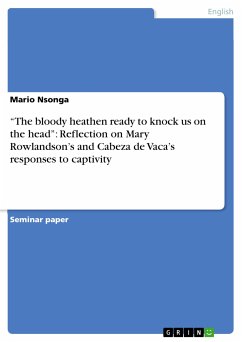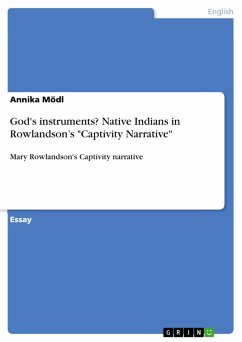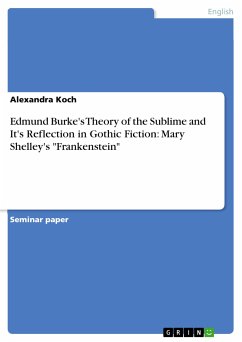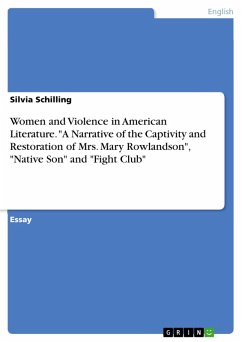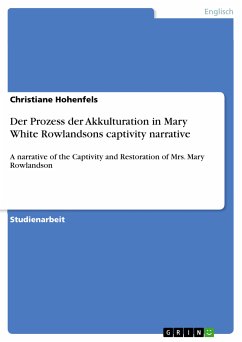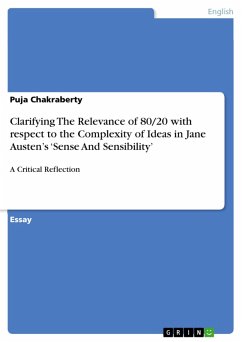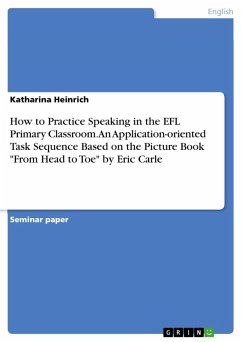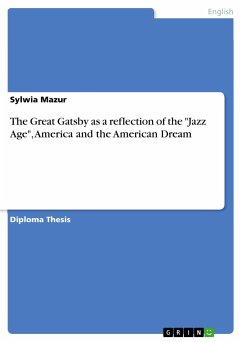Seminar paper from the year 2012 in the subject American Studies - Literature, grade: 2,0, Johannes Gutenberg University Mainz (Department of English and Linguistics), course: Frontier Lives, language: English, abstract: Inspired by medieval accounts about the City of Gold and the opportunity to tie on the famous Spanish conquerors, Cabeza de Vaca enthusiastically embarks to the Americas in 1527. However, the so-called Narváez Expedition develops different than expected and turns into a total disaster: during their expedition along the west-coast of Florida, Cabeza and his crew get lost, the majority of his comrades dies and Cabeza falls into the hands of the Indians. Exactly one century later, the Puritan goodwife Mary Rowlandson meets a similar fate and - after her town Lancaster has been raided by the Indians - becomes an Indian captive as well. This paper will extrapolate the different approaches of Vaca and Rowlandson to their Indian captivity, exemplifying through them the diverging intentions and strategies of the major colonizers of the New World, namely the English and Spanish. Therefore, I will mainly concentrate on Mary Rowlandson's account, accentuating her Puritan creed and the ambivalent success of her adaption of those principles on her life during captivity. In doing so, this paper will provide the reader with a brief historic overview about the Puritans' religious agenda in New England and explain why Rowlandson's text was met with such an exorbitant approval. In a short excursion, the main differences and similarities between Rowlandson's and Vaca's narration will be highlighted, only to point out that both Rowlandson and Vaca were figures bound to the social, cultural and religious conventions of their time.
Dieser Download kann aus rechtlichen Gründen nur mit Rechnungsadresse in A, B, BG, CY, CZ, D, DK, EW, E, FIN, F, GR, HR, H, IRL, I, LT, L, LR, M, NL, PL, P, R, S, SLO, SK ausgeliefert werden.

